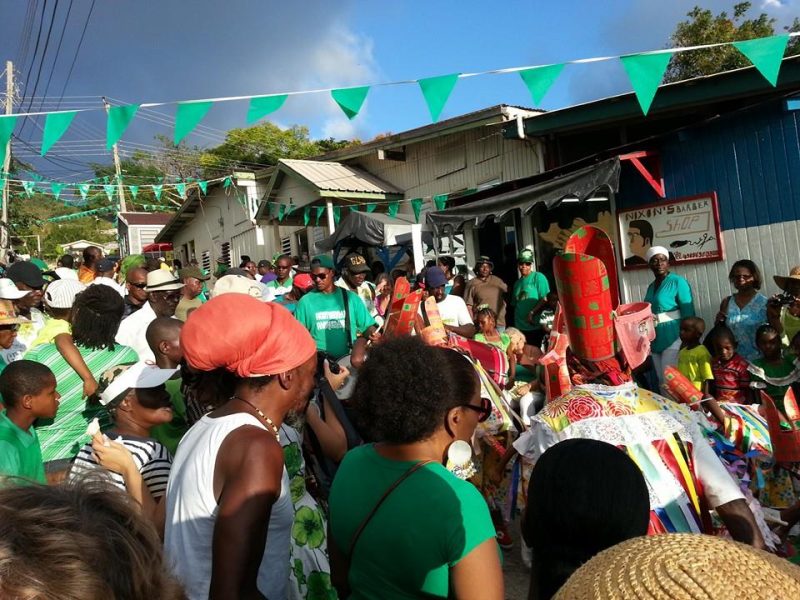
BRADES – Experts in ocean law and ocean zoning visited Montserrat earlier this month to meet with government officials and local stakeholders as part of the initial planning phase of Blue Halo Montserrat.
Blue Halo Montserrat, which officially launched in February 2015, is a four-year partnership between the Government of Montserrat and the Waitt Institute to ensure ocean resources are used sustainably, profitably, and enjoyably.
The two visiting affiliates, Read Porter, Senior Attorney at the Environmental Law Institute (ELI) and an expert in fisheries policy and international ocean law, and Dr. Will McClintock, a scientist and mapping expert from the University of California, Santa Barbara (UCSB), both presented to the Blue Halo Steering Committee, on September 1st, at the National Trust in Salem.
The Steering Committee was gathered by the Department of Agriculture, and is comprised of individuals from both the public and private sectors, including members from the Attorney General’s office, Port Authority, National Trust, Fisheries Division, Environment Department, fishers’ associations, and tourism.
Melissa O’Garro, Director of the Agriculture Department (which includes management of fisheries) commented, “We’re lucky to be able to partner with organizations like Environmental Law Institute and SeaSketch. Their inputs are giving us a clearer understanding of which coastal areas are of concern to our local stakeholders and which laws and institutions can help us achieve wiser ocean use.”
Under the project, the Government of Montserrat and the Waitt Institute will collaborate in developing and codifying a sustainable ocean policy for the island, including ocean zoning, sanctuary zones, and fisheries laws and regulations.
In addition to the Steering Committee meeting, Porter and McClinktock held one-on-one meetings to gain a deeper understanding of the local laws, regulation and policies, and provide SeaSketch training to committee members.
Porter discussed a report on Montserrat’s existing laws and authorities regarding ocean management, and McClintock introduced and demonstrated SeaSketch, a web-based mapping program that is being used to gather stakeholder ideas for how to design an ocean zoning plans for the island. The Steering Committee has begun using SeaSketch to identify areas of interest and concern to help identify focus areas for the zoning process.
“Montserratians are passionate and deeply knowledgeable about their oceans,” said McClintock. “It was an honor to begin capturing their areas of interest and concerns using SeaSketch, our first steps in identifying their priorities for ocean planning in the Blue Halo Initiative.”
In the upcoming months, Robin Ramdeen, Site Manager for Blue Halo Montserrat, will conduct interviews and use SeaSketch surveys to gather information and management ideas from ocean stakeholders on the activities such as fishing, diving, shipping and tourism, in and around Montserrat’s ocean.
“Doing the community surveys is going to be both interesting and exciting,” said Ramdeen. “I’m really looking forward to connecting and engaging with Montserratians, to document their ideas about their ocean. Local knowledge is key and to be able to capture that is really precious.”
ELI’s draft report and legal summary and analysis of Montserrat’s existing ocean laws and authorities will soon be available on the Waitt Institute’s website, www.WaittInstitute.org. The SeaSketch mapping tool is available at Montserrat.SeaSketch.org.







